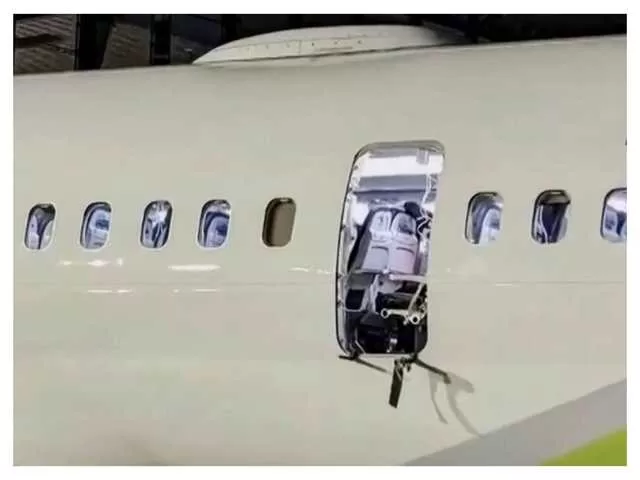In a startling development, a school teacher identified only as Bob stumbled upon the missing door plug torn off from an Alaska Airlines flight mid-air. The incident forced an emergency landing on a Boeing 737 Max 9 plane carrying 171 passengers from Portland, Oregon, to Ontario, California.
The National Transportation Safety Board (NTSB) announced that the recovered door plug, a pivotal missing element, will aid in unraveling the reasons behind the accident. The NTSB chair, Jennifer Homendy, emphasized the significance of this component in the investigation, especially given the series of pressurization warning lights reported on three earlier flights of the same aircraft model in December and January.
During the incident, heroic flight attendants ensured the safety of four unaccompanied minors by promptly securing their oxygen masks. Ms. Homendy painted a harrowing picture of the event, describing a 27kg panel blowing off the aircraft’s side, causing rapid depressurization before reaching cruising altitude.
Communication breakdown compounded the situation, with the cockpit door blown open, impeding communication between the flight crew and pilots. A laminated checklist and the first officer’s headset were lost through the hole, further adding to the chaos.
In a concerning twist, the cockpit voice recorder (CVR) lacked data due to not being retrieved within two hours, erasing critical information. Ms. Homendy highlighted the loss of this communication recording as a setback for the investigation and a missed opportunity to enhance aviation safety.
In response to the mid-air incident, the US Federal Aviation Administration (FAA) grounded 171 Boeing 737 Max 9 planes for inspections, leading to numerous flight cancellations and disruptions for affected passengers, including Alaska Airlines.
The NTSB revealed that Alaska Airlines pilots had previously reported pressurization warning lights on three occasions in December and January. Despite these warnings, the airline opted to restrict the aircraft from long flights over water as a precautionary measure. Alaska Airlines defended its actions, stating that such pressurization system write-ups are routine and were addressed in accordance with FAA regulations.
Ms. Homendy reiterated that it was fortunate the accident did not result in more severe consequences, emphasizing that the affected fuselage seats were unoccupied, and the plane had not yet reached cruising altitude. The incident ended without injuries as the plane safely landed back in Portland. The ongoing investigation seeks to uncover the interconnected factors contributing to this alarming mid-air event.

